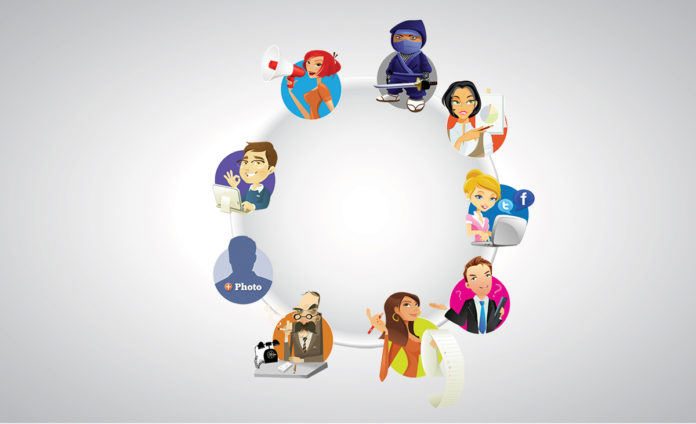The Expert
The Expert is the go-to person for questions about collaboration technology and best practices in your organization. The Expert looks beyond the normal file-sharing and project management capabilities of a collaboration solution and finds interesting and innovative ways to automate his or her work by leveraging sophisticated workflows, databases and other advanced features. Borderline geek, Experts are always experimenting, sharing new hacks on the intranet, and custom coding to create the coolest looking workspaces on the block. Oh, and they usually have the most interesting desk toys and gadgets.
The Siloist
The Siloist enjoys working alone and is reluctant to share only because he or she is not used to it. Siloists tend to be a bit absent from the workspaces they’re part of and like to do most work offline. Siloists are actually most at risk of losing files and work because they prefer not to save and backup regularly to the cloud-and they are always the last to realize, if ever at all, that the intranet is down.
The Dinosaur
The Dinosaur is not the most tech-savvy person in the organization. A creature of habit and uncomfortable with new ways of doing things. The Dinosaur tends to stick to traditional methods of work. While The Expert might equate managing projects by emails to banging two rocks together to create fire, The Dinosaur prefers to be cloaked in the sanctuary of status quo. The Dinosaur does not embrace a new tool without some encouragement, so it is extremely important that the collaboration solution be simple and intuitive.
The Ringleader
The Ringleader is anything but a behind-the-scenes person. The Ringleader is a big-idea person who helps other team members arrive at “aha” moments. Ringleaders begin a lot of discussions, bookmark interesting content and add thought-provoking comments to discussions and files. Their creative energy seeps into and influences team members across all departments.
The Stealth Ninja
A covert collaborator, the Stealth Ninja is the one who lurks, quietly moving from workspace to workspace viewing other people’s work that piques their interest. Stealth Ninjas are usually the first to view a file, even if they’re not part of the team. They usually abstain from commenting unless absolutely necessary with the only evidence of their presence as entry on the audit log.
The Executive
The Executive is usually a decision-maker in your company or department who has limited time, yet wants to be involved at a high level. Speed, efficiency and convenience are of utmost importance to The Executive, who prefers to communicate feedback and final decisions via email rather than logging into a system. When The Executive does log in, the purpose is usually to take in the status of various projects as opposed to actively engaging or working on a project at a detail level.
The Socialite
This type of collaborator was born to be social. Socialites are storytellers and connectors. Sharing project details and updates comes as a second nature to Socialites because they are more than used to sharing on a regular basis via Facebook, Twitter, Google+, MySpace, LinkedIn, Tumbler… you get the point. The Socialite always has a new update status, helps carry on conversations and encourages others to engage. Socialites are great for easing those who are less accustomed to open communication into being more social.
The Skeptic
The Skeptic is a somewhat vocal opponent to collaboration. Skeptics can often be detractors because they decentralize knowledge and communication when refusing to use the collaboration workspace. This is hope for The Skeptic, though, as they can ultimately be won over if convinced that the WIIFM (what’s in it for me?) quotient is high enough.
The Taskmaster
Taskmasters may err on the OCD side or simply be organized to the extreme. No detail is too small, no action item goes unassigned and no audit log unread. The Taskmaster is operationally-focused, using collaboration tools to fully executive on project plans. The Taskmaster is the one you can expect will follow up with a task list of action items five minutes after your call ends (and you’re grateful for it).
Source: Knowledge@Wharton














